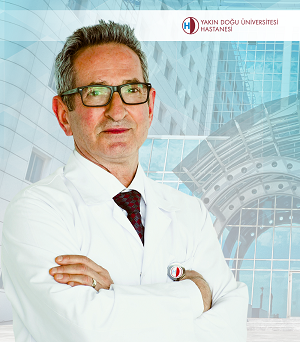
Prostate cancer, which is one of the most common types of cancer encountered by men in the world and in our country, can occur due to genetic reasons as well as environmental effects. Near East University Hospital, Head of the Department of Urology Prof. Dr. Ali Ulvi Önder said that the risk of catching the same disease is 2.2 times in a person whose father has prostate cancer, 3.4 times in those with a sibling, and 5.1 times in those with 2 first-degree relatives.
Excessive consumption of unsaturated fats increases the risk of developing prostate cancer.
Stating that prostate cancer is the most common cancer among men, Prof. Dr. Ali Ulvi Önder said, “One of the important risk factors is fat consumption. Excess consumption of unsaturated fats and obesity increase the risk of developing both prostate cancer and malignant cancer. In addition, smoking, red meat and animal fat consumption increase the risk of prostate cancer, while lycopene (tomatoes, other red vegetables and fruits), selenium (cereal, fish, meat-poultry, eggs, dairy products), omega-3 fatty acids (fish), vitamins D and E have a reducing effect on the risk of prostate cancer.
Trouble urinating may indicate prostate cancer
Prof. Dr. Ali Ulvi Önder says that, depending on the degree of obstruction in the urinary tract, prostate cancer causes complaints such as difficulty urinating, burning during urination, frequent urination, getting up to urinate at night, urinary incontinence, bifurcation, and difficulty in keeping urine. In addition, in the presence of advanced or metastatic prostate cancer, pain can be seen, especially in the lower backbones, depending on the region of the disease.
Definitive diagnosis of prostate cancer can be made by prostate biopsy.
Explaining that the definitive diagnosis of prostate cancer is made by the pathological examination of the tissue obtained from prostate biopsy, Prof. Dr. Önder said, “The most important determinants for the biopsy decision are the rectal examination of the prostate with fingers (DRE-Digital Rectal Examination) and the PSA (Prostate Specific Antigen) test in the blood.”
People with a family history of prostate cancer should have a PSA test from the age of 40, and those who do not, from the age of 50.
Since prostate cancer is the most common type of cancer among men and the risk of its occurrence increases with age, it is extremely important for men to have periodic check-ups after a certain age. Prof. Dr. Önder said, “People with a family history of prostate cancer are recommended to have PSA test and DRE starting from the age of 40, and those who do not, starting from the age of 50. This is a simple and inexpensive form of cancer screening. Even if the patient has no complaints, he may have cancer in his prostate.”
Imaging methods are used for staging…
Prof. Dr. Ali Ulvi Önder, “Today, the standard practice in prostate biopsy is rectal biopsy with the help of ultrasound (TRUS – transrectal ultrasound). In this application, the prostate is visualized with ultrasound and the biopsy procedure is performed systematically with the help of a special needle and gun. Generally, a total of 8-12 biopsies are taken and sent to the laboratory for pathological examination. The biopsy procedure is performed without anesthesia or preferably under local anesthesia. If prostate cancer is diagnosed as a result of biopsy, the stage of the disease is determined in order to make a treatment decision. Various imaging modalities such as computed tomography or MRI, whole-body bone scintigraphy or PET are used for staging.
Prof. Dr. Ali Ulvi Önder “As with all cancer diseases, the treatment of prostate cancer is carried out according to the stage of the disease. We can roughly divide the stage of prostate cancer into 3 main groups. Organ-confined disease, locally advanced stage and advanced stage. The decision to treat prostate cancer depends on factors such as the stage of the disease, the biopsy data, the patient’s health status, and the patient’s age.
Standard treatment options according to stages; monitoring, active monitoring, radiation therapy, surgery…
Prof. Dr. Ali Ulvi Önder also gave detailed information about the standard treatment options that can be applied according to the stages of the disease. In cases where the cancer is limited to the organ, the patient is followed up without any treatment. In general, active monitoring is applied in older patients with low progression potential. A repeat biopsy is performed after a certain period of time in patients with a low progression potential, low PSA value and in whom cancer is detected in 1 or at most 2 pieces of biopsy samples.
Finally, Prof. Dr. Ali Ulvi Önder said that all diagnosis and staging methods related to prostate cancer, as well as all treatment options, are successfully carried out at the Near East University Hospital.